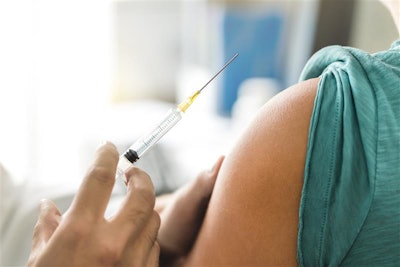
Without question, the Coronavirus disease (COVID-19) pandemic will be remembered as one of the most daunting, challenging and yet remarkable times for our global society—not only within the context of tragic loss and impact on lives and national economies—but also in terms of what must happen logistically for the safe distribution of temperature-sensitive vaccines worldwide.
Indeed, the world has faced epidemics and pandemics before, but technology—particularly Internet of Things (IoT) technology—can and will do much to help get vaccines into the right hands more quickly, safely and efficiently.
Cold chain vaccine distribution: An ideal use-case for IoT
The importance and complexity of cold chain logistics make it an ideal use case for IoT platforms and devices. They are designed to track assets, connect objects, share information and perform actions in real time to help identify, monitor and fix weaknesses in the cold chain—or any part of the chain—that comes into play. IoT devices help keep the process connected and protected all the way through.
For example, take mobile sensors employed to maintain vaccine temperatures to ensure the vaccine’s authenticity in route. These sensors, placed on the vaccine packages, containers, pallets, etc., collect and analyze vaccine temperature data throughout the route of distribution to the healthcare provider, plus send notifications with all the location details to the vaccine stakeholder. So, at any given time, providers and stakeholders can see where those packages are in the cold chain. They gain important information in real time as to vaccine state and health.
Blockchain’s role in vaccine supply chain tracking
Companies have developed various blockchain technology solutions that track the state of a vaccine. At its core, blockchain plays a key role in the cold chain distribution of vaccines to healthcare providers and administration locales, tracking all events associated with the lifecycle. From manufacturing of raw materials to vaccine distribution and administration, blockchain technology ensures the consumer receives a high-quality vaccine safely. When you track a vaccine blockchain back to its origin, you can expect to tick all the boxes along the way—quality, authenticity, security. Has it been hijacked? Does it make its way to the provider and consumer?
Securing cold chain IoT devices against hackers
Having to deal with cyber-criminals and other miscreants who use a pandemic for financial gain through methods like ransomware, phony COVID-19 vaccines or hijacking vaccines for ransom is nuts.
Fortunately, technology solution providers are taking advanced measures to ensure that all IoT and other components of the supply chain and cold chain are secure. A number of companies have developed blockchain and cold chain-based management solutions that help govern all aspects of manufacturing, distribution and administration of vaccines. These solutions identify when assets have gone outside the initial boundaries of the cold chain and notify all parties to take appropriate actions.
IoT’s broad fabric of security
IoT has such a broad fabric. With devices connected in this fabric, security is and should be an end-to-end consideration. It starts with hardware manufacturers and independent software vendor (ISV) partners to truly deliver a common method for securing these advanced solutions for cold chain management.
Cold chain/supply chain management solutions and platforms are composed of multiple different IoT components or connected devices. Some may be proprietary, but most are developed by different vendors and partners. So, having a common platform is very important. One way to achieve this is for healthcare providers to do their homework—to really select a product that issues unique credentials in the form of digital certificates—ensuring that data received through each IoT device is authentic and intended for them.
Consider companies that focus on certificates and digital certificates. This offers a means for IoT devices to talk to each other in a trusted communication where the data is protected. In cold chain and blockchain, you now have devices that are secured through certificates that don’t allow someone to communicate or pull data from an open platform. It only allows devices in this network, or in this solution, to communicate with those that they’re approved to associate with.
This also applies to expanding out from cold chain IoT solutions to industrial-type IoT applications that orchestrate within the fabric. What’s more, applications must be safeguarded through secure methods and protocols.
Partnering for secure orchestration and workflow automation
It’s not uncommon to read news stories about IoT devices that have been hacked—primarily in the consumer IoT space—items attractive to hackers such as smart refrigerators and temperature sensors in smart homes.
But, continue to evolve IoT solutions and offerings—to mesh the IoT fabric that lets companies orchestrate improvements and operational efficiencies of multiple workflows in supply chain, cold chain and blockchain to fulfill people’s needs securely.
Like most challenges, we see innovative and insightful solutions come to the surface. Cold chain/blockchain have proven that given the right deployment, they deliver a secure and much-needed solution to a problem the world is facing. These solutions will continue to evolve to be applied in other areas unforeseen today. It’s unfortunate that it took a pandemic to force the industry down this path, but the results are outstanding.





















